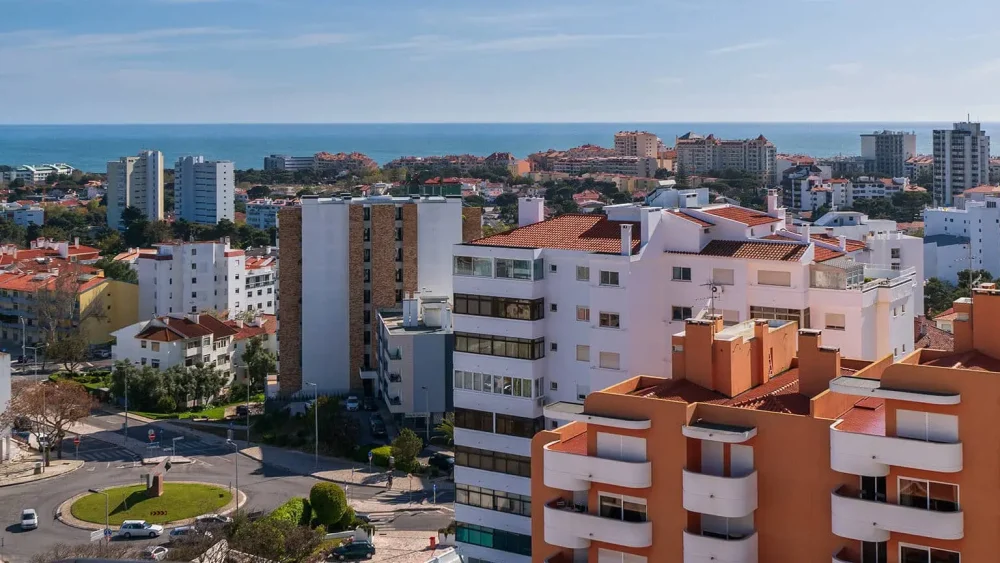The real estate market is surrounded by an aura of stability, reliability, and passive income. However, most perceptions of it are based not on facts, but on entrenched misconceptions. It is precisely the myths about real estate investments that lead to erroneous decisions, unprofitable investments, and incorrect strategies.
Without deep analysis and accurate calculations, even an investment in an elite property in the city center can lead not to profit, but to a prolonged financial loss. Understanding the mechanics of the market, location specifics, legal burdens, and real profitability distinguishes an investor from an adventurer.
Overrated Trap of Tranquility: Popular Myth about Real Estate Investments
Myths about real estate investments often start with the idea of complete investment safety. The common belief that “properties always appreciate” ignores real economic cycles, demand downturns, and devaluation risks. For example, in 2015, the Moscow housing market saw a 18% drop in average square meter prices due to a currency crisis and buyer exodus. Owners of “reliable” apartments in older buildings faced illiquidity and had to offer up to a 25% discount for quick sales.
In addition, the payback period is often stretched. For instance, a one-bedroom apartment near the “Aviamotornaya” metro station, rented out for 50,000 rubles per month, on average pays off in 20 years with a price of 12 million rubles, considering annual taxes, utility bills, costs for cosmetic repairs, and tenant vacancies. The illusion of “peaceful income” shatters when calculating the real profitability.
“Rent Guarantees Passive Income”: Instead of Dividends, Constant Management
The second most common myth about real estate investments is the belief in the “passivity” of rental income. In practice, owning a property requires constant attention: tenant selection, contract formalities, property condition monitoring, addressing technical issues, and tax obligations.
The average occupancy rate for short-term rentals in Sochi is 72% according to Daily Rent service data for 2024. Up to 30% of the profit is spent on maintenance: cleaning, administration, equipment replacement. Long-term rentals bring other challenges: payment delays, problematic tenants, contract terminations. Property management companies charge 10 to 20% of the turnover, further reducing profitability.
“Early Stage Purchase Is Always Profitable”: Risk of Unfinished Construction and Depreciation
Myths about real estate investments include a blind faith in profits from buying at the excavation stage. However, the Ministry of Construction statistics for 2023 recorded 174 problematic projects in Russia, affecting over 85,000 deceived co-investors. Unforeseen delays in project completion, design deterioration, contractor changes are common realities in the new construction market.
Even with successful project completion, the final value may not meet expectations. For example, in New Moscow, apartments in the “Rasskazovo” complex cost 6.5 million rubles during construction, but after completion, the average price dropped to 6.2 million rubles due to oversupply in the economy-class segment. The market does not always confirm the expected margin of 20–30%.
“Real Estate Always Appreciates”: Cyclical Nature and Local Failures
The common misconception of “eternal growth” in housing prices contradicts years of market observations. Myths about real estate investments distort the market as a constant expansion. In 2008, amidst the crisis, property prices in Moscow dropped over 40% in dollar terms. The decline lasted until 2010, and it took 5 years for prices to return to pre-crisis levels.
Local failures are also not uncommon. For instance, in 2022, new developments in the Academic microdistrict of Yekaterinburg saw a price decrease of 11% in six months due to an excess of square meters. Choosing an unsuitable location or housing category can easily turn an investment into a long-term illiquid burden.
“Property in Resort Areas Is a Gold Mine”: Oversupply and Seasonal Risks
Myths about real estate investments in seaside resorts create an image of perpetual rental income. However, locations like Anapa or Gelendzhik are already saturated with offerings: according to CIAN data, in 2024, the number of summer rental property listings increased by 38%, while demand only rose by 11%. The result is vacancies, price reductions, and undercutting by private landlords.
Moreover, seasonality sharply limits annual income. A 9 million ruble apartment in Lazarevskoye brings an average of 450,000 rubles over three summer months, but remains vacant for the other 9 months. Factoring in all expenses, the annual yield is below 5%, comparable to a deposit in a major bank but requiring significantly more time and resources.
“Commercial Real Estate Yields More”: Rate Not Always Justified
The common claim of stable office, street retail, and warehouse profitability overlooks high entry barriers and management complexities. Myths about real estate investments overestimate the B2B segment. Buying a 60 m² space in central Kazan requires at least 14 million rubles, and with a rent rate of 120,000 rubles per month, the payback period exceeds 12 years with ideal occupancy.
In addition, the owner faces costs for tenant-fit-out, increased wear and tear, building maintenance fees, HOA charges, advertising, and legal transaction support. In case of reduced foot traffic or tenant closure, the space may remain vacant for up to 9 months, especially in crisis conditions.
Debunking Myths about Real Estate Investments
Reasons why misconceptions fail:
- Ignoring taxation: property tax, personal income tax, land tax reduce net income.
- Hidden expenses: repairs, furniture, appliances, insurance, intermediary services require regular investments.
- Downtime between tenants: loss of income and additional expenses for interior updates.
- Currency fluctuations: reduced purchasing power, material cost increases, demand drops.
- Psychological pressure: expectation of price growth, fear of missed opportunities, market news dependency.
- Lack of experience: incorrect property evaluation, poor location choice, mistakes in contracts and calculations.
- Legal risks: encumbrances, inaccurate documents, neighbor disputes, developer bankruptcies.
Conclusion
Myths about real estate investments lose their power when confronted with specific figures, payback periods, and property operation conditions. A successful strategy always relies on detailed analysis, sober location assessment, comparison of alternative investment formats, and meticulous planning. Residential and commercial real estate can yield stable income only with sound management, risk understanding, and readiness for market instability.






 The premium segment is divided not only by building type, but also by architectural design, service level, and ownership format. Let’s consider what luxury real estate is in terms of functional types.:
The premium segment is divided not only by building type, but also by architectural design, service level, and ownership format. Let’s consider what luxury real estate is in terms of functional types.: What is luxury real estate — a symbiosis of architecture, status, technology and strategy. Investments in premium facilities allow:
What is luxury real estate — a symbiosis of architecture, status, technology and strategy. Investments in premium facilities allow:
 The decision in favor of one of the two statuses determines not only the route of legalization, but also the daily level of freedom. The differences between a residence permit and permanent residence are expressed in the powers that a person receives in a new country. Rights, access to systems, and the degree of government control — each of these parameters directly depends on the chosen residence format.
The decision in favor of one of the two statuses determines not only the route of legalization, but also the daily level of freedom. The differences between a residence permit and permanent residence are expressed in the powers that a person receives in a new country. Rights, access to systems, and the degree of government control — each of these parameters directly depends on the chosen residence format. The difference between permanent residence and a residence permit is not only in the name, but in the degree of control over life. The first one gives you rights. The second is permission. In the long term, it is the differences between a residence permit and permanent residence that form the scenario: adaptation with a margin or constant struggle with restrictions. When choosing between temporary and permanent status, it is necessary to take into account not only current circumstances, but also future goals. The right start will save you years, save you from difficulties and accelerate the path to stability.
The difference between permanent residence and a residence permit is not only in the name, but in the degree of control over life. The first one gives you rights. The second is permission. In the long term, it is the differences between a residence permit and permanent residence that form the scenario: adaptation with a margin or constant struggle with restrictions. When choosing between temporary and permanent status, it is necessary to take into account not only current circumstances, but also future goals. The right start will save you years, save you from difficulties and accelerate the path to stability.
 Portugal stands out from other European countries due to the favourable conditions for commercial property investors. There is a unique combination of factors that make the country’s market one of the most attractive in Europe.
Portugal stands out from other European countries due to the favourable conditions for commercial property investors. There is a unique combination of factors that make the country’s market one of the most attractive in Europe. Investing in overseas commercial property provides excellent opportunities for asset diversification, stable income and capital protection. Portugal is one of the most attractive markets for commercial investors due to its robust economy, tax incentives and strong infrastructure development.
Investing in overseas commercial property provides excellent opportunities for asset diversification, stable income and capital protection. Portugal is one of the most attractive markets for commercial investors due to its robust economy, tax incentives and strong infrastructure development.
 Castelo Branco is one of Portugal’s cheap cities to live in, with a well-developed education system and green areas. Property prices start from 45,000 euros for one-bedroom flats. The region provides comfortable living for families, professionals and remote workers. Castelo Branco maintains some of the lowest rents, utilities and housing taxes. A local university and government support programmes make it a sustainable location for budget investment.
Castelo Branco is one of Portugal’s cheap cities to live in, with a well-developed education system and green areas. Property prices start from 45,000 euros for one-bedroom flats. The region provides comfortable living for families, professionals and remote workers. Castelo Branco maintains some of the lowest rents, utilities and housing taxes. A local university and government support programmes make it a sustainable location for budget investment. Purchasing property outside of tourist cities allows you to avoid overheated prices and get maximum quality for minimum money. Each of these regions opens its own growth trajectory, creates local demand and strengthens the owner’s position. By focusing on these locations, you are investing not only in property, but also in the potential of a developing Portugal.
Purchasing property outside of tourist cities allows you to avoid overheated prices and get maximum quality for minimum money. Each of these regions opens its own growth trajectory, creates local demand and strengthens the owner’s position. By focusing on these locations, you are investing not only in property, but also in the potential of a developing Portugal.
 There are several mandatory steps in the process. Each step requires precision, adherence to deadlines, and coordination with a financial advisor or attorney.
There are several mandatory steps in the process. Each step requires precision, adherence to deadlines, and coordination with a financial advisor or attorney. Mortgages in Portugal for foreigners have long ceased to be a rarity. It is a working, clear and favourable tool for buying a home, building capital and moving to a country with a high standard of living. The terms and conditions of banks are loyal, the procedure is clear, and taxes are predictable. With a competent approach, a foreign investor not only gets the keys to a house in Europe, but also builds a new financial and legal base within the EU.
Mortgages in Portugal for foreigners have long ceased to be a rarity. It is a working, clear and favourable tool for buying a home, building capital and moving to a country with a high standard of living. The terms and conditions of banks are loyal, the procedure is clear, and taxes are predictable. With a competent approach, a foreign investor not only gets the keys to a house in Europe, but also builds a new financial and legal base within the EU.
 In recent years, moving to Madeira has become popular with people seeking a quality of life and favourable working conditions. The island is a great option for those who want to live in Europe without facing the high cost of living in cities such as Lisbon or Barcelona. Moving to Madeira in 2025 will be relevant not only for investors, but also for people who want a fresh start.
In recent years, moving to Madeira has become popular with people seeking a quality of life and favourable working conditions. The island is a great option for those who want to live in Europe without facing the high cost of living in cities such as Lisbon or Barcelona. Moving to Madeira in 2025 will be relevant not only for investors, but also for people who want a fresh start. Madeira represents an excellent choice for those who want to enjoy the perks of comfortable living, warm climate, convenient infrastructure and favourable tax incentives. Moving to the island will be a favourable decision for digital nomads, investors and those who want to travel to the most picturesque corner of Europe. There are plenty of opportunities for personal and professional growth in an atmosphere of nature, sunshine and tranquillity.
Madeira represents an excellent choice for those who want to enjoy the perks of comfortable living, warm climate, convenient infrastructure and favourable tax incentives. Moving to the island will be a favourable decision for digital nomads, investors and those who want to travel to the most picturesque corner of Europe. There are plenty of opportunities for personal and professional growth in an atmosphere of nature, sunshine and tranquillity.
 Porto ranks second among the best cities in Portugal due to its high quality of life, affordable prices and developed infrastructure. The city is known for its cultural heritage, wine industry and strong tourism sector. The average salary here is lower than in Lisbon, but the standard of living compensates for this disadvantage. The city remains a centre for freelancers, small business owners and professionals in tourism and commerce.
Porto ranks second among the best cities in Portugal due to its high quality of life, affordable prices and developed infrastructure. The city is known for its cultural heritage, wine industry and strong tourism sector. The average salary here is lower than in Lisbon, but the standard of living compensates for this disadvantage. The city remains a centre for freelancers, small business owners and professionals in tourism and commerce. Choosing the best city in Portugal to live in depends on your priorities. For career and work, Lisbon is the place to be. For family life – Braga, for students and academics – Coimbra, and for those looking for a balance of comfort and affordability, Porto and Aveiro are ideal. Immigration to the country offers prospects for work, business and comfortable living.
Choosing the best city in Portugal to live in depends on your priorities. For career and work, Lisbon is the place to be. For family life – Braga, for students and academics – Coimbra, and for those looking for a balance of comfort and affordability, Porto and Aveiro are ideal. Immigration to the country offers prospects for work, business and comfortable living.
 For an objective assessment, you should consider the main cost items: rent, food and transport. These categories define everyday spending and help to understand how affordable a country is.
For an objective assessment, you should consider the main cost items: rent, food and transport. These categories define everyday spending and help to understand how affordable a country is. Portugal’s moderate cost of living makes it an attractive place to move to, especially for those who appreciate culture, mild climate and convenience. Lisbon and Porto are suitable for professionals, while the Algarve is for those seeking tranquillity. Relocating will require careful cost planning, but the results justify the means.
Portugal’s moderate cost of living makes it an attractive place to move to, especially for those who appreciate culture, mild climate and convenience. Lisbon and Porto are suitable for professionals, while the Algarve is for those seeking tranquillity. Relocating will require careful cost planning, but the results justify the means.





